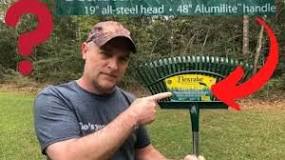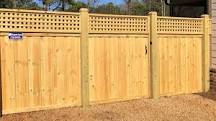Got a bumpy lawn that’s ruining your backyard vibe? You can fix it by leveling the surface with soil, reseeding, and maintaining proper care. It’s not as daunting as it sounds! Let’s dive into some simple steps to get your lawn looking smooth and lush again.
Why Is Your Lawn Bumpy?
Before we jump into solutions, let’s chat about why your lawn might be bumpy in the first place. Common culprits include:
Soil Compaction
Over time, soil can become compacted due to foot traffic, heavy equipment, or even just the weight of water. This compaction can lead to uneven surfaces.
Poor Drainage
If water isn’t draining properly, it can create low spots or puddles that dry out and leave bumps when they do.
Pest Issues
Sometimes, critters like moles or voles can dig around and create uneven patches in your lawn.
Steps to Fix Your Bumpy Lawn
Now that you know what might be causing those bumps, let’s talk about how to fix them!
Assess the Damage
Start by walking around your yard. Identify the worst areas and note down where the bumps are most pronounced. This will help you focus your efforts.
Leveling the Surface
- Topdressing: Spread a thin layer of soil or compost over the bumpy areas. This helps fill in low spots and encourages new grass growth.
- Raking: Use a rake to spread the topdressing evenly. Aim for a smooth finish, but don’t stress too much—nature isn’t perfect!
- Aeration: If your soil is compacted, consider aerating it. This involves poking holes in the ground to allow air and water to penetrate deeper.
Reseeding
After leveling, it’s time to reseed those bare patches:
- Choose the Right Seed: Pick a grass type that matches your existing lawn for a seamless look.
- Sow the Seeds: Spread the seeds over the topdressed areas and lightly rake them in.
- Watering: Keep the area moist but not soggy until the new grass is established.
Ongoing Maintenance
Once you’ve done all this hard work, keep up with regular maintenance:
- Mow Regularly: Keeping your grass at an optimal height encourages healthy growth.
- Fertilize: A good fertilizer will help your lawn recover and thrive.
- Watch for Pests: Keep an eye out for any signs of pests that could cause future bumps.
Summary
Fixing a bumpy lawn is totally doable with a little effort! By leveling the surface with topdressing and reseeding, plus maintaining proper care, you’ll have a smooth lawn in no time. Just remember to keep an eye on drainage and compaction to prevent future bumps from popping up!
FAQ
How long does it take for grass seed to germinate?
Typically, grass seeds take about 7 to 14 days to germinate, depending on the type of grass and weather conditions. Keep that soil moist during this time for best results!
Can I use sand for leveling my lawn?
Using sand alone isn’t recommended because it can create drainage issues. A mix of topsoil or compost with sand is better for leveling without compromising drainage.
What time of year is best for fixing a bumpy lawn?
The best times are usually spring or early fall when temperatures are mild and moisture levels are higher. This gives new grass the best chance to establish itself before extreme weather kicks in.
Should I hire a professional for this job?
If you’re feeling overwhelmed or if your lawn is really uneven, hiring a pro might be worth it! They have tools and expertise that can save you time and ensure quality results.







